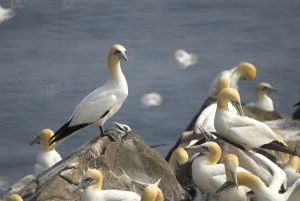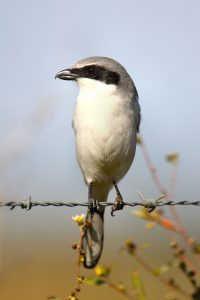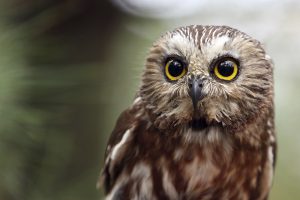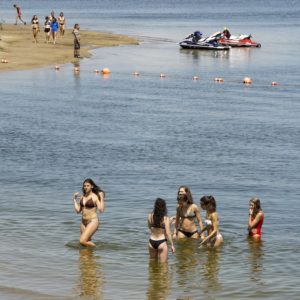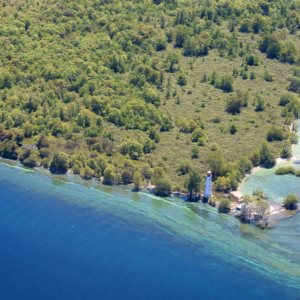A Walk in the Park, and the Importance of Protected Areas
Growing up in Toronto, where the city seems to slowly creep ever farther over the landscape, parks provided the perfect green haven away from the concrete jungle. It’s where I saw my first moose, learned how to canoe, and, most importantly, where I first connected with nature. Over the next twenty years, I would realize how far-reaching the positive effects these parks would have, not only on me, but on the national conservation of our wilderness.

Killarney Provincial Park, Ontario.
While inspiring me to enter into the field of biology, these parks also gave me my first scientific job – working as a student naturalist. Here, the park shifted from being a playground to a teacher. In the park, we ran a variety of programs including guided hikes celebrating the overlooked plants of the understory and pond explorations where families caught darting aquatic invertebrates. They would peer through foggy glass at these wonderful and freaky creatures from the deep, eyes wide with wonder. Kids would go running back to their campsites to share all the amazing things that they had learned with their family and friends, allowing the knowledge to grow and gain a life of its own. We had some kids return in future years who were inspired to create their own “Interpretive Centres” full of antlers, rocks, and anything they were lucky enough to scrounge up back at home. It was surreal to know that these park educational programs could form an intricate understanding between the public and nature. It was here that I realized that a park is a place of inspiration, where future generations can learn more about the natural world.
Parks aren’t just refugia for humans however. Of course, they are also a home to a beautifully diverse range of species. These areas act as a haven to maintain pristine environments which, in turn, allows wildlife to thrive in peace. After graduating from university, I had the opportunity to delve into this realm wherein I worked on a variety of biomonitoring projects in parks across the country. Some of these projects were hands-off, including using motion-sensing trail cameras and timed audio-recorders to track species remotely throughout the landscape. These tools allowed us to non-invasively capture the shy and elusive critters in the area and gives us insight into their behaviours and habitat preferences.

Snug Harbour in Gros More National Park, Newfoundland.
For example, at Blue Lake Provincial Park, this system allowed scientists to discover the presence of the Olive-sided Flycatcher, a species-at-risk within Ontario. Other research projects were species-specific. For example, in Gros Morne National Park, scientists set up a fish fence every year in the park’s streams to monitor Atlantic salmon populations. These counts allow them to track the population trends and actively manage this declining species. Over time, I realized that the list of research conducted in our parks goes on for miles, from vegetation monitoring to species re-introductions. Through this vast array of scientific work, we are expanding our understanding of these ecosystems which consequently allows us to better preserve the many species that call our protected areas home.
- Loggerhead Shrike by Larry Kirtley
What I’ve learned through my life spent in parks is that they are wildly complex. From inspiring people to appreciate and learn more about the great outdoors, to actively managing species-at-risk, our parks play a huge role in ensuring that the landscapes and wildlife we enjoy today are still here for future generations. Parks are living organisms, acting as playgrounds, teachers, and scientists. They fill up our imaginations and hearts, transporting us from the confines of the city into vast and untamed landscapes. These parks are so much more than what meets the eye, you only need to take the time to get out there and then you can begin to appreciate and explore. Parks have helped shape who I am today, and I am excited for what else they will teach millions of other Canadians in the years to come.
The author drew her inspiration for this post from her time spent as a naturalist for Ontario Parks at Blue Lake Provincial Park.

